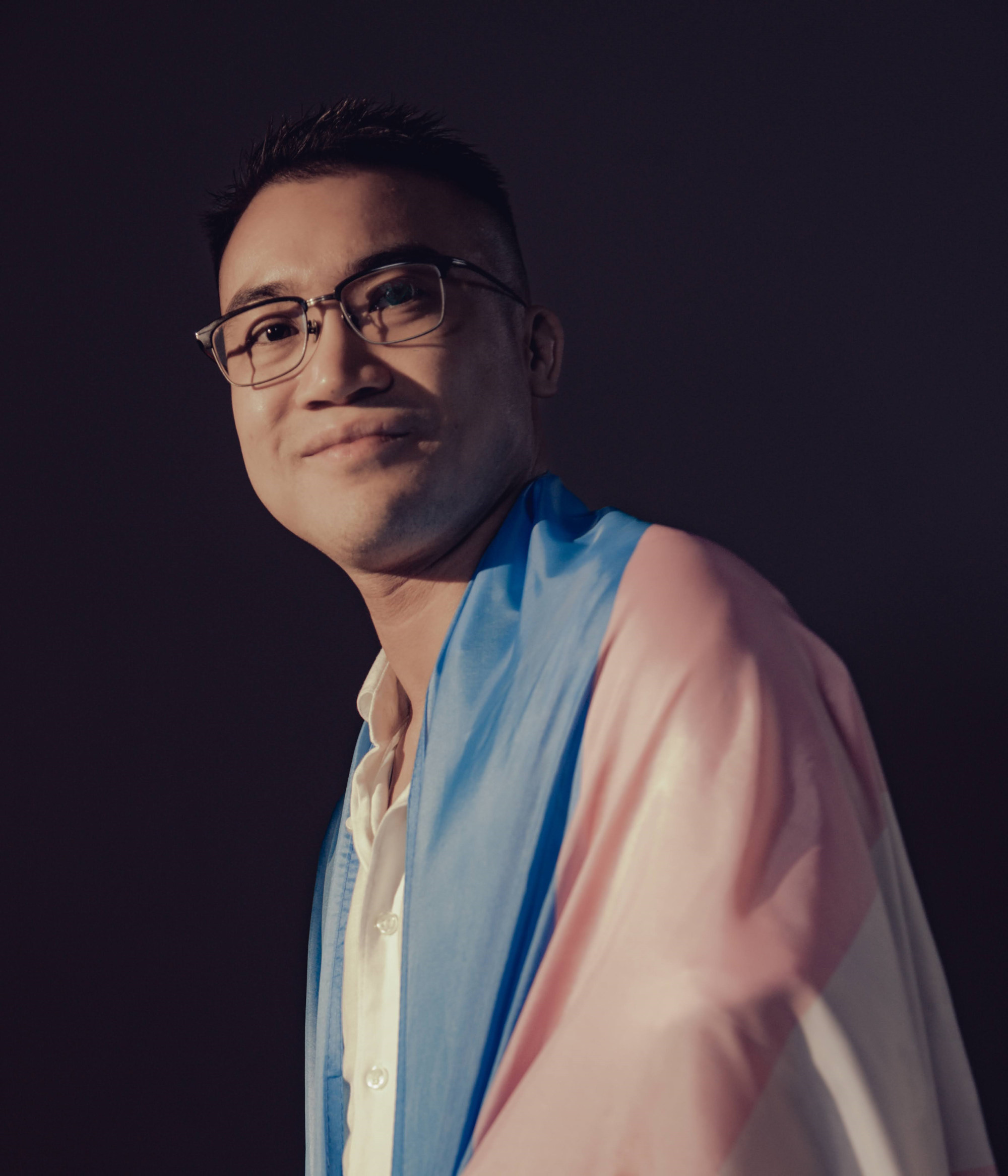
‘Provocative’: how Gilbert & George’s art changed a Hong Kong transgender activist’s life
- Henry Edward Tse, co-founder of the NGO Transgender Equality Hong Kong, first came across Gilbert & George’s work around age 18 while studying in England
- Two pieces – Existers and Hunger – are very relevant to Tse’s own work in that they tackle ‘untouchable’ subjects and raise awareness for the underprivileged
Anglo-Italian artistic duo Gilbert & George are known for performance pieces and bright, graphic collages, as well as for their highly formal appearance and for always appearing in public together as a couple.
Collage-style photographic work Existers (1984) combines 28 separate images to present the pair in hyperreal colours amid a group of young men, while Hunger (1982) uses 16 photogram images to frankly but cartoonishly depict a graphic sex act.
Henry Edward Tse, whose own fight for gender recognition in the Hong Kong courts led him to co-found the NGO Transgender Equality Hong Kong, tells Richard Lord how they changed his life.
I first came across Gilbert & George’s work, and did an art project on them, while studying in England, when I was around 18.

With the A-level art curriculum I was studying, you had to pick your own subject and conduct independent research, which was drastically different from what I had experienced in Hong Kong.
I attended an evangelical girls’ school in Hong Kong, where we were spoon fed. I got extremely sick of that school – there was a lot of homophobia; going to my new school near Brighton was completely different.
I wasn’t out at the time, but I guess the queerness in [Gilbert & George’s] work appealed to me.
I knew they were gay when I was doing my research, but I was not analysing these works through a queer perspective. The angle I was using was kind of superficial, analysing forms and colour use, and historical background.
These two pieces have a lot of relevance to my work, in that they touch upon “untouchable” subjects and raise awareness for the underprivileged. Self-discovery was one of the major elements that drew me into art.
Studying art is not geared towards something really academic, and that allows you to explore yourself rather than just being an exam machine.
I found that these works were provocative, and the fact that they were queer was just treated as something normal in the environment I was in; my teacher didn’t see it as problematic.
There was a lesbian couple in my class, and they wouldn’t be blamed or scolded, unlike in my school in Hong Kong. It was a reflection of my experience of studying in the UK; I felt safe to explore myself, and I realised I was trapped.
It’s so interesting to revisit these works now and try to connect the dots. I find a lot of similarities between Gilbert & George’s work and the work I’m doing now.
We want to communicate with the masses and make our message accessible to people rather than something very esoteric; my role as an activist is to try to educate and raise awareness. And their work is very easy to understand, but it’s also provocative and pushing boundaries.
I see their work everywhere. The direction of their work has a lot to do with giving visibility to those who are under-represented and marginalised. It’s similar to my work: I’m not doing this for myself; there are lots of other trans people behind me.

